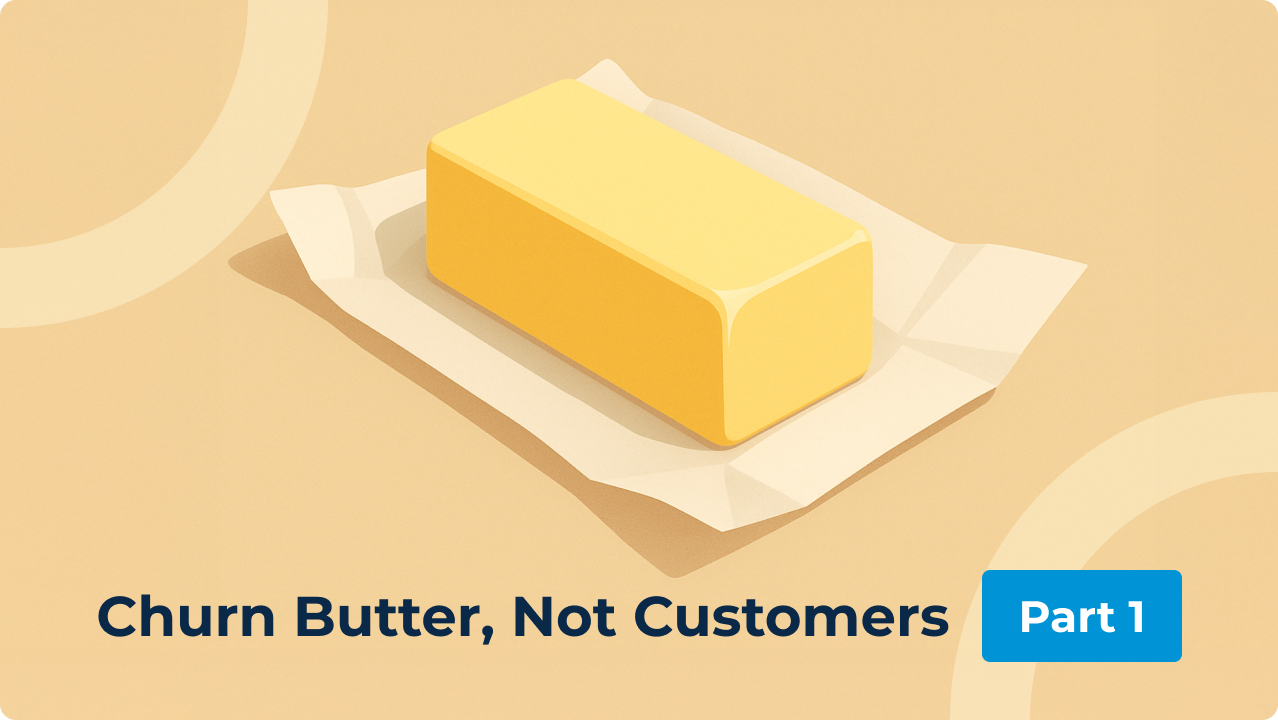
John Paterson
Founder & CEO, Quadshift
4 Simple—but Powerful—Keys to Driving Higher Profits in Vertical Market Software
Vertical market software (VMS) companies win by being focused and capital-efficient. Yet many still leak margin through cultural habits, hidden vendor bloat, fuzzy financial reporting, and manual workflows that steal leadership bandwidth. Below are four levers we use inside Quadshift (and see across the best-run VMS operators worldwide) to tighten the ship and unlock profit you can reinvest in growth.
1. Build a Cost-Conscious Culture
Think of frugality as an operating system, not a one-off cost-cut. When senior leadership treats every dollar like it’s their own, teams quickly follow suit.
- Set visible norms. Review expense reports in management meetings; celebrate ingenious “$0 solutions.”
- Model the behavior. Replace “business-class by default” with clear ROI rules; share your own cost-saving hacks.
- Tie savings to incentives. When people see thrift convert directly into their compensation, disciplined spend becomes self-reinforcing.
Cultural thrift sounds soft, but it’s measurable: firms in the top quartile of cost-management maturity capture up to 20 percentage-points higher EBITDA margin than peers, according to recent McKinsey benchmarks.
2. Make a Vendor List—and Chop
Most businesses pay for more tools, seats, and duplicative functionality than they realize.
Your playbook:
Export the master list from your ERP or expense-management platform. Capture: vendor, owner, renewal date, payment terms, total cost, # seats.
Interrogate each line item:
- Ask for a discount. Even mature vendors often concede 5-15 % on renewal when faced with competition.
- Benchmark alternatives. Have an ops analyst and/or an AI-assistant generate comparable tools and pricing.
- Right-size seats. Remove dormant users; consolidate multiple instances.
Aim for a first-pass 10–15% gross savings. In our portfolio, the best “chop sprints” close within 90 days post-close.
3. Tighten Financial Reporting & Operations
A cluttered chart of accounts (CoA) blurs insight and slows decision-making. Simplifying the CoA and rebuilding the budget from zero-base forces discipline: every revenue driver and expense line must be justified. Clear account names reduce coding errors and speed up month-end close—directly improving agility.
Checklist
CoA (Chart of Accounts)
- Quick win: Merge overlapping GL codes and rename them so anyone can tell what’s inside at a glance.
- Long-term habit: Do an annual “spring-clean” to retire dormant codes and keep the CoA lean.
Budgeting
- Quick win: Rebuild the budget bottom-up, tying every revenue line to its driver (price × units, churn, upsell, etc.) and every expense to a clear owner.
- Long-term habit: Re-forecast quarterly, then monthly using actual run-rate data so surprises surface early.
Reporting cadence
- Quick win: Commit to a 10 day, then a five-day month-end close.
- Long-term habit: Move key KPIs (MRR, pipeline) into real-time dashboards for leadership and functional heads.
Budgeting is a mirror: it reveals where spend isn’t aligned with strategy and sparks hard conversations before dollars leave the bank.
4. Eliminate → Automate → Delegate
Tim Ferriss popularized a deceptively simple rule: “Never automate what can be eliminated, and never delegate what can be automated.” We flip it into a repeatable workflow for VMS teams:
Eliminate
- Key question: “Does this task even need to exist?”
- Typical moves: Kill duplicate weekly reports, sunset unused feature tiers, retire legacy on-prem installs.
- Profit impact: 100% cost removal.
Automate
- Key question: “Can software/AI do 80% of the job?”
- Typical moves: CRM-to-billing hand-offs, automated invoice runs, L1 support chatbots, usage-based renewals.
- Profit impact: 30-60% labor/time savings once workflows run on autopilot.
Delegate
- Key question: “If a human must do it, does it have to be done by me, my key people, or even done in-house at all?”
- Typical moves: Outsource AR collections, payroll processing, or first-pass QA to specialist partners.
- Profit impact: 15-25% cost reduction by delegating or outsourcing repeatable tasks.
Automation (including AI) can add significant productivity growth, resulting savings that fall straight to the bottom line for asset-light software firms.
Pro tip: Apply the framework starting with your highest-output people—founders, product leaders, top reps. Every minute you free for them compounds in new features shipped and deals closed.
Putting It All Together
Culture sets the tone; vendor discipline plugs leaks; rigorous financial plumbing shows you where to steer; and a relentless Eliminate-Automate-Delegate loop keeps overhead light while you scale.
At Quadshift we’ve seen companies unlock 5–10 percentage-point EBITDA improvements within the first year by attacking just two of these levers hard. If you’d like to compare notes—or need help running your own “profit sprint”—drop us a line.
Ready to shift your margins upward? Let’s talk.




